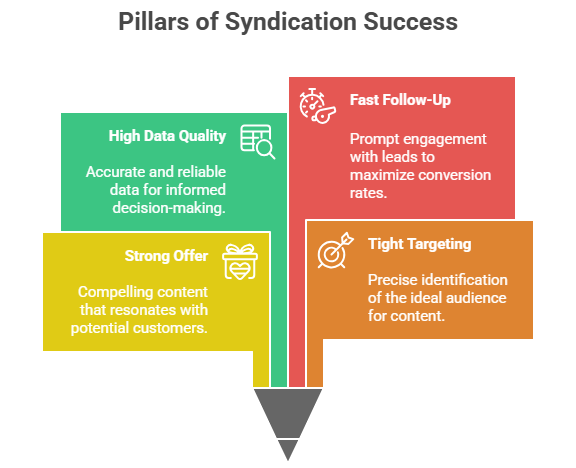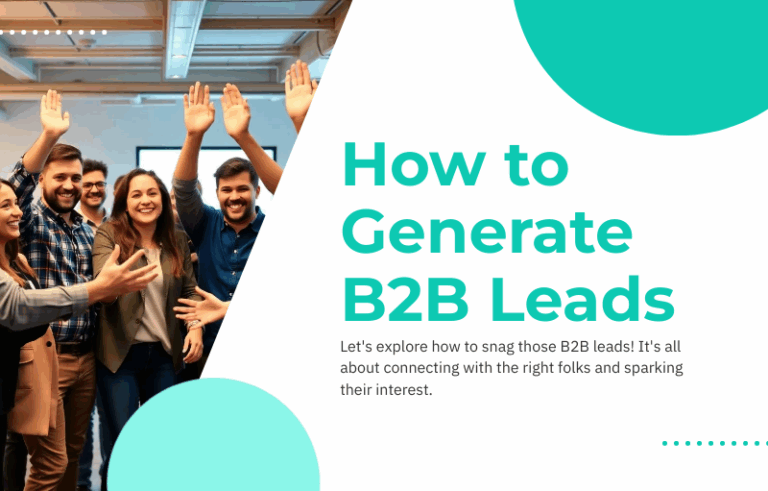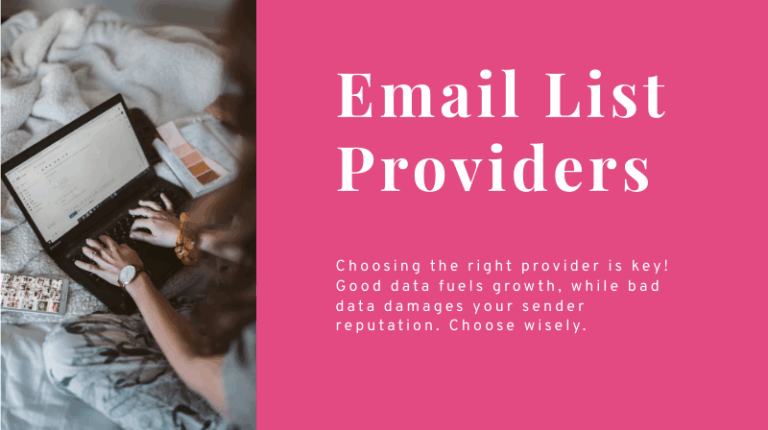
Staying ahead in the digital marketing field requires leveraging advanced technologies, personalized engagement, and an ever-increasing focus on user experience (UX). This guide explores the top website marketing strategies for 2025, helping brands maximize online visibility, conversion rates, and customer retention.
1. Advanced Personalization through AI and Data Analytics
Personalization has been a staple in website marketing for years, but 2025 will see more sophisticated applications of AI-driven personalization. Leveraging customer data platforms (CDPs) and real-time behavioral insights, marketers can create hyper-personalized content experiences tailored to user interests.
Pro Tip: Use dynamic content that changes based on a visitor’s browsing history or profile to enhance engagement.
2. Omnichannel Marketing with Seamless Integration
A successful website marketing strategy today involves connecting your website to broader channels like social media, email, and paid advertising. Omnichannel marketing ensures consistent messaging and branding across platforms, improving the customer journey from initial interest to conversion.
- For B2B companies, integrating email automation tools and personalized newsletters can significantly improve lead nurturing efforts.
- Use automation platforms like HubSpot or Marketo to streamline omnichannel campaigns.
3. Leveraging SEO Trends: Voice and Visual Search Optimization
Search behavior is changing as users increasingly turn to voice search and visual search. In 2025, optimizing your website for these trends will be crucial.
Key SEO Tactics for 2025:
- Implement long-tail keywords and natural language queries to capture voice searches.
- Use high-quality images and alt text optimized for Google Lens and Pinterest visual searches.
- Maintain clean, structured data to enhance search engine crawlability.
For a comprehensive guide on SEO best practices, explore Reach Marketing’s SEO insights.
4. Content Marketing 2.0: Interactive and Immersive Experiences
Static blog posts and articles are no longer sufficient to capture the attention of savvy users. Instead, focus on interactive content, such as:
- Quizzes, polls, and interactive infographics
- Augmented reality (AR) experiences
- Video-based storytelling
According to Reach Marketing’s blog on content marketing, offering value-driven and interactive content increases audience retention and engagement.
5. UX-Centered Web Design
Websites that prioritize user experience not only rank higher on Google but also see better conversion rates. Essential UX improvements include:
- Fast-loading pages (under 3 seconds)
- Mobile-first designs to accommodate growing mobile traffic
- Intuitive navigation and clean interfaces
Implementing these principles ensures visitors remain engaged longer and are more likely to convert.

6. AI-Enhanced Chatbots and Conversational Marketing
AI-powered chatbots have grown increasingly intelligent and versatile. By 2025, conversational marketing will become even more personalized, offering a human-like experience that guides users through the buyer’s journey in real time.
Key benefits of AI chatbots:
- 24/7 availability: Ensures continuous support for global customers.
- Data-driven conversations: Bots can deliver personalized responses based on user history.
- Lead qualification: Chatbots can automatically segment users and pass on qualified leads to sales teams.
For businesses looking to boost lead generation, leveraging AI-powered bots can make a huge difference, especially when integrated with CRM platforms like Salesforce or HubSpot.
7. Hyper-Targeted Email Marketing
Despite the rise of other channels, email marketing remains one of the most effective strategies for website engagement. However, generic email campaigns are a thing of the past. In 2025, hyper-targeted and behavior-driven email marketing will take center stage.
Strategies for effective email marketing in 2025:
- Segmentation and personalization: Use behavioral data to tailor emails to individual preferences.
- Interactive elements: Incorporate GIFs, polls, and clickable call-to-actions (CTAs) to boost engagement.
- AI-optimized subject lines and content: AI tools can help generate subject lines and preview text that improve open rates.
Explore more about email marketing strategies on Reach Marketing’s platform.
8. Social Proof and UGC Integration
Social proof, including reviews, testimonials, and user-generated content (UGC), remains a powerful marketing tool in 2025. Potential customers trust the opinions of their peers, making UGC a compelling addition to your marketing mix.
How to leverage UGC effectively:
- Showcase customer reviews prominently on landing pages.
- Encourage customers to share photos of your products or services on social media with branded hashtags.
- Embed social media feeds on your website to keep content fresh and engaging.
For detailed strategies on B2B lead generation and nurturing trust, check out Reach Marketing’s guide on lead generation services.
9. Influencer Collaborations Beyond Social Media
Influencer marketing is evolving. In 2025, collaborating with influencers won’t be limited to Instagram or YouTube but will extend to co-branded content, webinars, and even website guest blogs.
To make the most of influencer partnerships:
- Choose influencers with a strong niche audience relevant to your brand.
- Co-create content that adds value to both audiences.
- Measure ROI through website traffic and conversions driven by influencer campaigns.
10. Leveraging Video Marketing Across Platforms
Video content continues to dominate web traffic. In 2025, websites that integrate short-form videos, explainer videos, and live streams will see higher engagement and dwell times.
Effective video strategies include:
- Embedding product demonstration videos on product pages.
- Creating FAQ videos to answer common customer queries.
- Using live videos for product launches and behind-the-scenes looks.
For tips on using video in marketing automation, explore Reach Marketing’s blog on marketing automation best practices.
11. Programmatic Advertising
Programmatic advertising automates the buying of ad space, ensuring marketers can target specific audiences in real time. By 2025, advancements in AI will further refine programmatic advertising, making it a must-have tool for marketers.
Why use programmatic advertising?
- Precision targeting: Reach the right audience at the right time.
- Improved ROI: Automated bidding ensures cost-efficiency.
- Real-time analytics: Continuously optimize campaigns based on performance data.
Learn more about display advertising networks and their role in lead generation on Reach Marketing’s website.
12. Interactive Webinars and Virtual Events
With the rise of remote work and virtual interaction, webinars and online events remain critical tools for engagement. Hosting regular webinars allows companies to establish authority, generate leads, and engage directly with their audience.
Best practices for 2025 webinars:
- Promote early: Use your website, email list, and social channels to create buzz.
- Engage during the event: Use polls, Q&A sessions, and live chat to keep attendees engaged.
- Follow up: Send post-event surveys and personalized content offers to maintain engagement.
13. Advanced A/B Testing for Website Optimization
A/B testing will become increasingly sophisticated in 2025, going beyond simple headline and CTA tests to cover deeper elements like:
- Page layout and navigation flow
- Visual hierarchy and image placements
- Interactive elements such as quizzes or surveys
By continuously testing, marketers can fine-tune their websites for maximum conversions and user satisfaction. Using platforms like Google Optimize or Optimizely can streamline the process.
14. Data Privacy and Trust Building
As data privacy regulations tighten worldwide, ensuring your website complies with the latest GDPR, CCPA, and other privacy laws is crucial. More importantly, building trust through transparent data practices will set you apart from competitors.
Steps to build trust in 2025:
- Clearly display your privacy policy and cookie settings.
- Use secure HTTPS connections across all web pages.
- Offer clear opt-in and opt-out options for data collection.
15. Voice User Interface (VUI) and Accessibility
The rise of voice assistants and increasing focus on accessibility means that websites in 2025 must cater to a broader audience, including users with disabilities.
Key accessibility features:
- Screen-reader compatibility
- Keyboard navigability
- Descriptive alt texts for images
For B2B websites looking to improve their design and user experience, Reach Marketing offers specialized WordPress web design services.
16. Zero-Click Searches and Featured Snippets
Google’s focus on featured snippets and zero-click searches means websites need to optimize content for instant answers. Providing concise, structured information can help capture snippet spots and drive traffic.
17. Enhanced Lead Scoring and Nurturing
Lead scoring allows businesses to prioritize high-value prospects, ensuring sales teams focus their efforts on leads most likely to convert. By integrating AI-driven lead scoring systems, companies can improve the efficiency of their marketing efforts.
For an in-depth look at lead nurturing strategies, visit Reach Marketing’s resource on sales-qualified leads.

18. Smart Content Automation for Scalable Growth
In a world where customers demand instant information and hyper-personalized experiences, smart content automation is becoming increasingly important. By leveraging AI tools, businesses can scale their content creation while maintaining relevance and quality.
Key components of smart content automation:
- Automated blog generation: AI-driven platforms can create well-researched articles based on user preferences and trending topics.
- Dynamic landing pages: Using marketing automation software, websites can display customized landing pages based on visitor demographics, behavior, and interests.
- Automated email content updates: Email newsletters with dynamically updated content can increase engagement by showing users the latest blogs, offers, and product updates relevant to them.
19. Gamification for Enhanced User Engagement
Gamification transforms website interactions into engaging and fun experiences, encouraging users to spend more time on the site and complete desired actions such as signing up, making a purchase, or downloading resources.
How to gamify your website:
- Reward programs: Offer points for completing specific actions like filling out a form or sharing content on social media.
- Quizzes and challenges: Create interactive quizzes related to your products or services, offering rewards or badges upon completion.
- Progress tracking: Allow users to track their progress through your content, such as e-learning modules or guides, and provide completion badges.
By adding elements of fun and competition, businesses can improve user retention and drive conversions. Studies show that gamified websites can boost engagement by up to 30%.
20. Mobile-First Strategy for Emerging Markets
Although mobile-first design has been a standard best practice for several years, 2025 will witness an even stronger emphasis on optimizing websites for mobile users. With the increasing penetration of smartphones in emerging markets, businesses can tap into a vast new audience by providing a seamless mobile experience.
Key tactics for mobile-first optimization:
- AMP (Accelerated Mobile Pages): Ensure that your content loads quickly on mobile devices using AMP.
- Mobile-friendly navigation: Implement thumb-friendly navigation menus and clickable elements.
- Optimized checkout process: For e-commerce sites, provide an easy-to-use checkout flow that requires minimal input and offers multiple payment options, including mobile wallets.
Adopting a mobile-first approach will not only enhance user experience but also improve search rankings, as Google continues to prioritize mobile-friendliness in its algorithm.
21. Social Media Integration with eCommerce
Social commerce is on the rise, with platforms like Instagram, TikTok, and Pinterest offering integrated shopping features. By embedding social commerce tools directly on their websites, businesses can reduce friction in the buyer’s journey and create a unified shopping experience.
Best practices for social commerce integration:
- Use social media login options to streamline account creation.
- Embed shoppable galleries that showcase real customer photos from Instagram and Pinterest.
- Incorporate live social proof widgets displaying real-time purchases, reviews, and user-generated content.
According to recent data, over 40% of online shoppers say that the ability to shop directly from social media influences their purchasing decisions.
22. Data-Driven Decision-Making with Predictive Analytics
Predictive analytics involves using historical data, machine learning algorithms, and statistical models to predict future behavior. In 2025, websites that harness predictive analytics will have a competitive edge by anticipating user needs and delivering tailored solutions in real time.
How to implement predictive analytics:
- Customer lifetime value (CLV) prediction: Identify which customers are likely to generate the most revenue over time and focus marketing efforts on retaining them.
- Content recommendations: Use AI to predict what content users are likely to engage with based on their previous interactions.
- Churn prevention: Predict which customers are at risk of churning and proactively offer incentives or personalized support to retain them.
For marketers looking to explore predictive analytics tools, platforms like Google Analytics 4 (GA4) and Tableau offer robust solutions for deriving actionable insights from large data sets.
23. Eco-Friendly Web Hosting and Sustainability Initiatives
As environmental awareness continues to grow, more consumers are prioritizing brands that demonstrate a commitment to sustainability. Businesses that adopt eco-friendly website practices can not only improve their brand image but also reduce operational costs.
Sustainable website practices include:
- Green hosting providers: Use hosting services that run on renewable energy sources.
- Optimized web assets: Minimize file sizes to reduce energy consumption during page loads.
- Sustainability badges: Clearly display your commitment to eco-friendly practices through certifications and trust signals.
Incorporating sustainability into your website marketing strategy can also improve SEO, as Google increasingly rewards fast, lightweight sites that consume fewer resources.
24. Integrated CRM and Marketing Automation
Integrating your Customer Relationship Management (CRM) system with marketing automation platforms allows for more precise tracking and nurturing of leads throughout the sales funnel. In 2025, seamless CRM integration will be a must-have feature for businesses aiming to improve their website’s marketing ROI.
Advantages of integrated CRM systems:
- Unified customer view: Track all touchpoints and interactions a user has with your brand, from email campaigns to social media engagement.
- Personalized workflows: Automatically trigger email sequences, SMS notifications, or retargeting ads based on user actions.
- Advanced segmentation: Segment audiences based on detailed data points such as past purchases, engagement level, and browsing behavior.
Businesses can learn more about the power of integrated CRM systems by visiting Reach Marketing’s automation services.
25. Voice Commerce Optimization
Voice commerce is expected to grow significantly as voice assistants like Alexa, Google Assistant, and Siri become more sophisticated. Websites optimized for voice commerce can cater to the increasing number of users who prefer shopping hands-free.
Steps to optimize for voice commerce:
- Focus on natural language SEO by targeting conversational keywords and phrases.
- Create voice-friendly product descriptions that are concise and informative.
- Ensure your website is compatible with voice-activated devices, offering easy navigation and checkout options for voice users.
26. Micro-Moments and Instant Gratification
A micro-moment is a critical point when a consumer seeks immediate answers, whether it’s to learn something, do something, or buy something. In 2025, websites that can cater to these micro-moments effectively will see improved user satisfaction and conversion rates.
How to capture micro-moments:
- Provide instant answers through detailed FAQ sections, rich snippets, and AI-driven chatbots.
- Use progressive web apps (PWAs) to deliver a near-instant experience, especially on mobile.
- Ensure a fast, frictionless path to purchase by reducing the steps required to complete an action.
27. Loyalty Programs with Blockchain Technology
Blockchain technology is no longer limited to cryptocurrencies; it’s being used to revolutionize loyalty programs by making them more transparent, secure, and transferable.
Features of blockchain-powered loyalty programs:
- Tokenized rewards: Customers can earn tokens for purchases, reviews, or referrals, which can be redeemed or exchanged.
- Decentralized ownership: Users have full control over their loyalty points, allowing them to use or trade them as they wish.
- Cross-brand partnerships: Blockchain enables partnerships between brands, allowing customers to use points across different ecosystems.
Adopting blockchain-based loyalty programs can enhance customer retention and increase repeat purchases.
28. Smart Form Optimization
Lead capture forms remain a critical element of website marketing. However, long and poorly designed forms often lead to high abandonment rates. In 2025, smart form optimization will focus on user-friendly designs and contextual form fills.
Best practices for smart forms:
- Use progressive profiling to gather information incrementally, rather than overwhelming users with too many fields at once.
- Offer auto-fill suggestions to speed up form completion.
- Add trust signals (like secure payment icons or privacy policy links) near forms to increase conversions.

Additional Considerations When Optimizing Your Website
Personalized User Journeys through Dynamic Content
One of the most powerful website marketing strategies for 2025 is the creation of personalized user journeys using dynamic content. Unlike static pages, dynamic websites can adapt their content in real-time based on visitor attributes such as geographic location, browsing behavior, or customer status (new vs. returning).
For example, if a returning customer visits an e-commerce website, they might see tailored product recommendations based on their previous purchases. On a blog, new readers may be presented with introductory content, while returning visitors see more advanced guides or premium content offers. This level of customization not only increases user engagement but also improves conversion rates by delivering highly relevant information at the right time.
How to Implement Dynamic Content
- Segment your audience: Use data from your CRM and website analytics to divide your audience into key segments (e.g., first-time visitors, leads, or VIP customers).
- Leverage marketing automation platforms: Tools like HubSpot and Marketo can automate content delivery based on predefined rules or AI-driven insights.
- Use personalized CTAs: Instead of generic calls-to-action, implement personalized CTAs that cater to the specific needs of different user segments, increasing click-through rates by up to 202%.
Why Dynamic Content Works
Dynamic content works because it addresses a fundamental human desire for relevance. Users are more likely to engage with content that speaks directly to their interests or solves a problem they’re currently facing. Additionally, it reduces bounce rates and encourages repeat visits, two key factors that positively impact SEO rankings.
Gamification as a Tool for Lead Generation
Gamification is rapidly gaining traction in website marketing, offering businesses a creative way to engage users and generate leads. By incorporating game-like elements into the user experience, websites can encourage visitors to perform specific actions, such as signing up for a newsletter, sharing content, or completing a survey.
Effective Gamification Tactics for Websites
- Spin-the-Wheel Offers: A popular gamification tactic involves giving users the chance to win discounts or freebies by spinning a virtual wheel. This approach adds excitement to the user experience and encourages email signups.
- Progress Bars: Display progress bars during lengthy sign-up or checkout processes. These visual indicators create a sense of completion, motivating users to finish the process.
- Referral Contests: Encourage users to refer friends by offering rewards for the top referrers. Referral contests not only gamify the experience but also help expand your audience organically.
Real-World Success Stories
Brands like Duolingo have successfully used gamification to enhance learning experiences. By offering streak rewards and leveling systems, they keep users engaged for longer periods, significantly improving retention. Similarly, many SaaS companies use gamified onboarding processes to ensure new users adopt their tools quickly and effectively.
Gamification’s Role in Website Marketing
When used strategically, gamification transforms otherwise mundane interactions into enjoyable experiences. It encourages users to explore more pages, engage with different types of content, and complete conversion-focused actions, all of which contribute to achieving marketing goals.
Optimizing for Voice Search: A Growing Necessity
Voice search continues to grow in popularity, thanks to the increasing use of voice-activated devices like Amazon Echo, Google Home, and smartphones with built-in voice assistants. By 2025, it’s estimated that over 50% of all internet searches will be conducted via voice. This shift in search behavior requires marketers to rethink their SEO strategies to accommodate natural language queries.
How Voice Search Differs from Traditional Search
- Conversational Tone: Voice searches tend to be longer and more conversational than text-based searches. Instead of typing “best website marketing strategies,” a user might say, “What are the best website marketing strategies for 2025?”
- Local Intent: Many voice searches have local intent, such as “Where can I find a digital marketing consultant near me?” This makes local SEO a crucial component of voice search optimization.
- Question-Based Queries: Voice searches often come in the form of questions, making it important for websites to include FAQ sections and optimize content for question-and-answer formats.
Voice Search Optimization Tips
- Use long-tail keywords: Focus on natural, conversational phrases rather than short, generic keywords.
- Create structured data: Implement schema markup to help search engines understand your content better and improve the chances of being featured in rich snippets.
- Focus on mobile: Since most voice searches happen on mobile devices, having a fast, mobile-friendly website is critical.
Voice search optimization not only enhances visibility but also positions brands as leaders in their field by providing instant, relevant answers to user queries.
The digital marketing landscape in 2025 demands a multifaceted approach. From AI-driven personalization and advanced SEO techniques to programmatic advertising and omnichannel marketing, businesses must adapt to new trends to stay competitive. Ensuring a user-centric website experience, leveraging cutting-edge technologies, and focusing on trust-building will be key to success.
For businesses ready to elevate their marketing strategy, consider exploring Reach Marketing’s comprehensive solutions for lead generation, marketing automation, and web design services.
If you’re looking for more guidance on implementing these strategies, visit Reach Marketing’s blog section for regular updates and expert insights.



